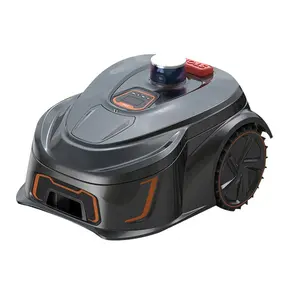Popular in your industry






















Top categories
About sink sump pump
Introduction
Plumbing issues can be a homeowner's worst nightmare, especially when it comes to water damage and flooding. However, there's a solution that can revolutionize your plumbing system and keep your home dry: the sink sump pump. This device, designed for areas where gravity drainage is impractical, can be a game-changer in maintaining a dry and clean environment. This article will delve into the workings of sink sump pumps, their benefits, and how they can help prevent water damage, improve drainage efficiency, and reduce maintenance costs.
Understanding Sink Sump Pumps
Sink sump pumps are designed for water removal in areas where gravity drainage is impractical. They are commonly used in residential spaces, particularly under sinks and laundry trays. These devices are essential for maintaining a dry and clean environment in these areas.
The Need for Sink Sump Pumps
Sink sump pumps are essential for homes that regularly face issues with flooding or dampness, particularly in basements. They are especially useful during months with heavy rainfall or snowfall that melts and causes water-related problems. These pumps are designed to remove water from the lowest points in your home, such as basements or crawlspaces, and force it out into a draining space to avoid flooding, water damage, and mold growth. They are among the best ways to prevent water damage and can help eliminate water before it becomes a problem.
How Sink Sump Pumps Work
Sink sump pumps are typically found in homes with laundry rooms or basement bathrooms. They sit on a 'sump basin,' a pit cut into the ground. When the wastewater level in the sump basin reaches a certain threshold, a movable float switch in the pump triggers it to begin draining the wastewater. As the wastewater is pumped out, the float drops back down, turning off the water pump. This system prevents sewer gases from entering the house by ensuring all plumbing structures are vented.
Benefits of Sink Sump Pumps
A sink sump pump offers numerous benefits. It's primarily installed to prevent flooding and keep your home dry by directing excess water to a nearby storm drain. This helps in reducing moisture and humidity levels, thereby guarding against mold and mildew growth. However, it's important to have a battery backup for your sump pump to ensure its functionality during power outages. The upfront costs of installing a sump pump are easily offset by the savings from preventing costly repairs due to flooding and mold remediation.
Preventing Water Damage
A sink sump pump can be a significant asset in preventing water damage in your home. During heavy rainstorms or floods, water seeping into the basin is pumped back outside, preventing potential flooding and serious water damage. A functioning sump pump can also help in situations of sewage backups, pumping wastewater out of your home. Furthermore, it can protect your sewer line from damage caused by heavy rains, reducing the risk of your home being flooded with sewage. Regular testing and maintenance of your sump pump are crucial to ensure its effectiveness.
Improving Drainage Efficiency
Efficient drainage is crucial in any structure, especially during rainy seasons when the risk of water seepage increases. A well-designed drainage system, such as the use of sink sump pumps, can prevent water ingress and damage to the internal structure. The system generally consists of a filter system, a conduit system, a collector chamber, and a disposal unit. The construction techniques to avoid the entry of seepage water into a structure are also vital. These techniques include foundation drains, blanket drains, interceptor drains, and drain away panels.
Reducing Plumbing Maintenance Costs
Sump pumps, including sink sump pumps, can save you money by reducing the number of foundation cracks that you have to repair. They remove excess water from the exteriors of foundations, taking a great deal of pressure off of those foundations. Over time, these savings can end up being fairly substantial. So, while they can be a little expensive to install, they can actually end up saving you substantial amounts of money down the line.
Revolutionizing Your Plumbing with Sink Sump Pumps
Sink sump pumps can revolutionize your plumbing system. They are installed in a pit in your basement or other underground space to prevent flooding and keep the area dry. They direct excess water to a nearby storm drain, acting as a guard against moisture problems, mold, and mildew growth. However, they require a power source to function, so consider a battery backup for power outages. The upfront costs of installing a sump pump are offset by preventing costly repairs from water damage and mold remediation.
Choosing the Right Sink Sump Pump
Choosing the right sink sump pump is crucial for efficient plumbing. There are two types of primary sump pumps: submersible pumps and pedestal pumps. Submersible pumps are placed underwater in your sump pump basin, while pedestal pumps are positioned with the pump motor out of the water, above your sump basin. Pedestal pumps are best for small basins. Also, consider battery backup sump pumps for added assurance in case of power outages. They kick on during a blackout or if the main pump fails. Ensure you get a designated 'battery back-up' system.
Installation and Maintenance Tips
Installing a sink sump pump involves preparing the basket strainer, inserting it into the sink drain hole, attaching the pump, and setting up PVC piping. It's crucial to install a check valve to prevent water backflow and a ball valve to control water flow. Once all parts are glued together, plug the pump into a GFCI outlet. Regular maintenance, including cleaning and checking for debris, ensures the longevity of your pump and prevents indoor flooding.
Conclusion
Sink sump pumps are a powerful tool in the fight against water damage and flooding. They not only help maintain a dry and clean environment but also improve drainage efficiency and reduce maintenance costs. Choosing the right type of pump and ensuring regular maintenance can maximize their benefits. Despite the initial installation costs, the long-term savings from preventing costly repairs due to water damage and mold remediation make them a worthwhile investment. Revolutionize your plumbing system with sink sump pumps and enjoy a safer, drier home.
























